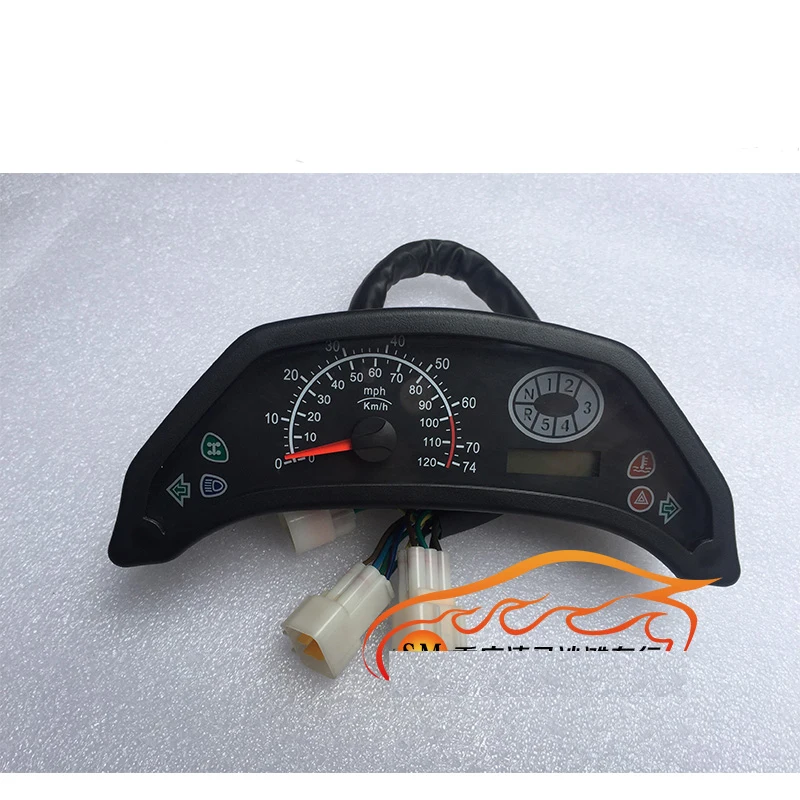Speedometer condensation used to be a common thing on motorcycles and even in some cars, but today’s instruments are much better sealed against moisture.
While modern cars have air-conditioning to keep the humidity level down, motorcycle instruments are still exposed to the weather, so they can still be vulnerable.
Heavy rain, prolonged high humidity such as we are currently experiencing in Queensland or careless washing can lead to condensation.
For example, NEVER use a high-pressure washer directly on your instruments. in fact, whenever you wash your bike keep water away from the instruments. You can even tape some plastic over them. while you wash your bike.
Click here for our top 10 tips on washing your motorcycle.
Never use a high pressure washer on instrumentsHow to fix condensationThere are many methods suggested for fixing instrument condensation – some are good and some are not.
A bit of condensation is not a huge problem and may even clear after a while, so don’t panic and do anything drastic.
However, if left to sit for a long time, it can cause corrosion and in digital instruments it can cause the display to malfunction.
If it’s a particularly bad problem and you can’t fix it, take it to your dealer.
Don’t let them tell you it is “normal”!
It’s not. You paid good money for your bike and, unless you caused the problem by using a high-pressure washer, it is not your fault and should be replaced under warranty as a workmanship or component defect.
There was some condensation in a Harley test bike’s instruments and Harley said they would simply replace the unit.
Bad ideasOk, let’s start with what you shouldn’t do.
Don’t put rice on it. No, it doesn’t soak up the moisture from outside the casing and no, Japanese techs won’t come along over night, eat the rice and fix it!
Similarly anti-moisture gel packs from packaging won’t work. Besides, they will have already sucked most of the moisture out of the air, so they have limited absorption left!
Besides, they will have already sucked most of the moisture out of the air, so they have limited absorption left!
You can buy the gel, but how do you pack it around the instruments to work effectively?
Don’t spray pure alcohol on the instruments. Unless you know where the water got in, this is just a waste of good alcohol.
Avoid opening instruments or drilling a hole to let the moisture out as you are likely to make the instruments even more vulnerable to moisture getting in.
If you do this with old instruments, treat the inside of the glass with an anti-fog solution that you use on your helmet visor. Be careful to reseal properly with silicone or a new gasket.
Old instruments may be easy to open, but modern instruments are “sealed for life” by the manufacturer. Trying to prise then open can cause damage.
On some old instruments you can also disconnect the cable and leave the instruments to sit in the sun for a day or two.
Illegal tamperingModern instruments are not meant to be easily opened to stop people illegally tampering with the speedo.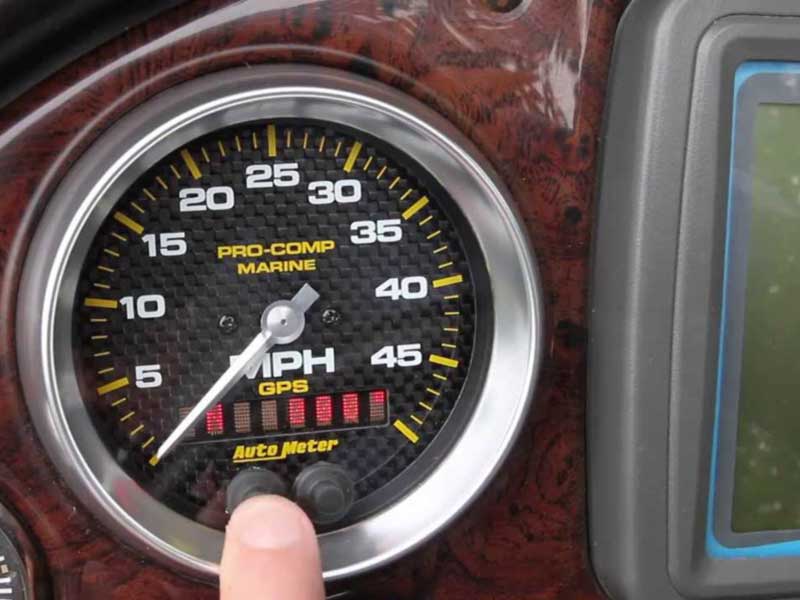
Former F1 boss Bernie Ecclestone boasted that he once sold a Roller to a fellow rogue Cockney dealer after winding back the clock and later buying it back from him with even fewer miles than when he sold it.
Very funny, but in most countries it’s a serious offence. In Australia, if you “wind the clock back” you face up to two years’ jail and fines of up to $60,000. Dealers face fines of about $200,000.
Hair dryer methodI had a 1957 Morris Major that had condensation in the instruments and fixed it by blowing hot, dry air on to it with a hair dryer.
However, you should be very careful using a hair dryer as your instruments may be surrounded by plastic painted with fake chrome.
Hot air can cause this chrome to lift and then you have a bigger problem than a bit of condensation.
The old Morris instruments had metal surrounds, so they were not damaged by the heat.
If you use as hair dryer, don’t get too close and don’t start off with the highest heat setting.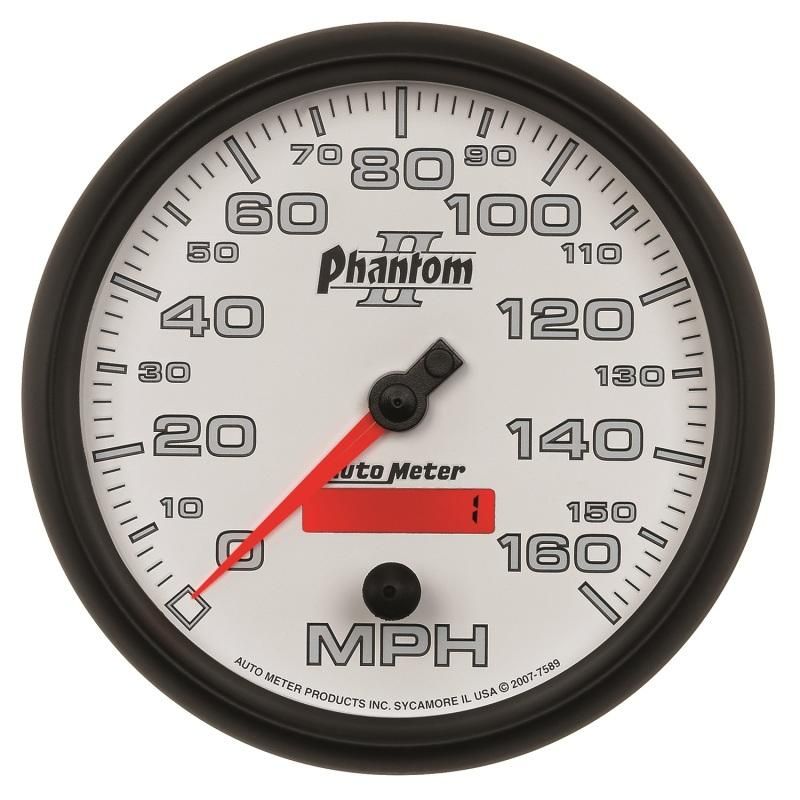
Go for a long ride.
The cool wind may just dry it out. After all, if water got in, it can also get out.
If the problem persists after a long ride, you may need to heat the instruments to dry them out.
Instead of using a hair dryer, put a light globe close to where the moisture is and leave it on over night or for a couple of days, depending on how bad the condensation is.
Or place your bike next to an air-conditioner over night to blow dry air on to the bike.
Get the best motorbike news, rumors, deals and events each week. We will keep you up to date on the cool stuff only. No crap, we promise.
ShareTweetPinShareSubmitEmail
Freelance writer for various national magazines and websites, plus founder of MotorbikeWriter.com. I started MotorbikeWriter to bring the world all the daily motorcycle news, views, reviews and lifestyle happenings.
`;
Cars
Fact Checked
Lori KilchermannIn order to choose the best all-terrain vehicle (ATV) speedometer, you will need to examine several aspects of a speedometer, making sure the instrument will provide you with the best service. A watertight case is very important for an ATV speedometer and you might want to avoid any such instrument that is not rated as such. Another key concept of the best ATV speedometer is an instrument that is rated as being shock-free or shock-resistant. With most ATV speed capabilities being much less than a passenger automobile, the best ATV speedometer will be graduated in smaller speed readings to give an accurate reading of the vehicle's true speed.
A watertight case is very important for an ATV speedometer and you might want to avoid any such instrument that is not rated as such. Another key concept of the best ATV speedometer is an instrument that is rated as being shock-free or shock-resistant. With most ATV speed capabilities being much less than a passenger automobile, the best ATV speedometer will be graduated in smaller speed readings to give an accurate reading of the vehicle's true speed.
Many ATV machines come from the manufacturer without a speedometer. If you would like to install one, a waterproof or water-resistant instrument is typically one of the best ATV speedometer units that you can buy. The common ATV is operated in various types of weather and in wet and rugged terrain. This makes the water-resistant speedometer a must for long life on your ATV.
The common ATV is operated in various types of weather and in wet and rugged terrain. This makes the water-resistant speedometer a must for long life on your ATV.
Due, in part, to the rugged nature of the average ATV and the rough trails and off-road areas on which the machines are operated, a shock-proof ATV speedometer may be your best choice. If a low-quality speedometer is chosen instead, the pointer needle can easily become loose or dislodged. This can result in the needle bouncing around inside of the speedometer case and you will have no way of accurately monitoring your speed. A shockproof or shock-resistant speedometer will withstand the rough conditions in which many ATVs are operated. Many of these types of instruments also come with a soft-rubber, shock-absorbing mounting bracket.
A shockproof or shock-resistant speedometer will withstand the rough conditions in which many ATVs are operated. Many of these types of instruments also come with a soft-rubber, shock-absorbing mounting bracket.
The typical operating speed of an ATV is far less than that of an average passenger automobile. This mandates that the best ATV speedometer is calibrated and marked with far smaller graduations and speeds than an automobile speedometer. Also, this makes for a speedometer that is far less difficult to read or maintain at a desired speed. By lessening the speed indicators on the ATV speedometer, the riders' speed can be much more accurately tracked and monitored than on a speedometer that has a far longer range between each marking on the dial. Some of the best speedometers are also equipped with digitally-displayed speed readings.
By lessening the speed indicators on the ATV speedometer, the riders' speed can be much more accurately tracked and monitored than on a speedometer that has a far longer range between each marking on the dial. Some of the best speedometers are also equipped with digitally-displayed speed readings.
ATV speed sensor - a device responsible for collecting and transmitting information to the vehicle's ECU. The signals sent allow you to calculate the speed of the ATV. But what to do if you bought an ATV, and after a while you found a malfunction? In this case, you need to figure out how and when the speed sensor is replaced.
The signals sent allow you to calculate the speed of the ATV. But what to do if you bought an ATV, and after a while you found a malfunction? In this case, you need to figure out how and when the speed sensor is replaced.
Obviously, if the sensor is broken, the ATV's speedometer will not display speed. The instrument panel of the ATV will simply stop working or start to function incorrectly, showing false information. Although this is not the most serious problem that a rider may face.
Due to speed sensor failure:
In addition, if the ATV does not show the correct speed, problems with the odometer begin. For example, you can drive only 50 km, and the device will increase the mileage of the ATV by 300-400 km. A similar problem is especially unpleasant if you plan to sell the device, because a few tourist trips will increase its mileage by a couple of thousand kilometers.
A similar problem is especially unpleasant if you plan to sell the device, because a few tourist trips will increase its mileage by a couple of thousand kilometers.
If you notice on the speedometer that the ATV is not picking up speed, then you need to check the speed sensor. Of course, the speedometer itself could break, but this rarely happens.
The sensor may fail due to:

Before dismantling the speed sensor, it is advisable to carry out a basic diagnosis of the speedometer. It will be enough to check the condition of the wiring and cable, as well as clean its nodes from dirt.
It's worth noting right away that each ATV uses different types of sensors. Therefore, you should not buy a device “at random”, as you will simply throw money away. To select the appropriate component, you need to study the documentation of the ATV. Usually it specifies the specification of spare parts.
You can also dismantle the old device and take it to a specialist shop. However, remember that an unsuitable sensor cannot be fixed near the propeller shaft, and the data from it will be inaccurate.
Keep in mind that original spare parts for branded ATVs are expensive. And, to save money, you can take a similar Chinese sensor. For example, on the CFmoto X8 all-terrain vehicle, you can put a device with the number 35.3847, which is used in domestic cars.
If you notice that the ATV does not develop speed according to the speedometer or if you find other symptoms of a sensor malfunction, you need to replace the part. Even a novice driver can do this. To perform the procedure, you need:
 After that, you need to inspect the device and decide whether it can be used further.
After that, you need to inspect the device and decide whether it can be used further. Actually, this is the end of the job. The rider can only check the operation of the device. If the sensor is functioning correctly, the speedometer will show that the speed of the ATV increases and decreases, the vehicle will stop stalling, and fuel consumption will decrease by 15-20%.
02/19/2021 3338
Although the season for ATVs and motorcycles does not depend on the season and may not be interrupted, many motorists prefer snowmobiles in winter, sending ATVs and motorcycles to storage until the weather warms up.
Before long-term storage, it is not enough to simply clean the ATV of dirt and place it in a warm, dry garage. Its service life and the quality of further operation depend on the correct preparation of transport for wintering.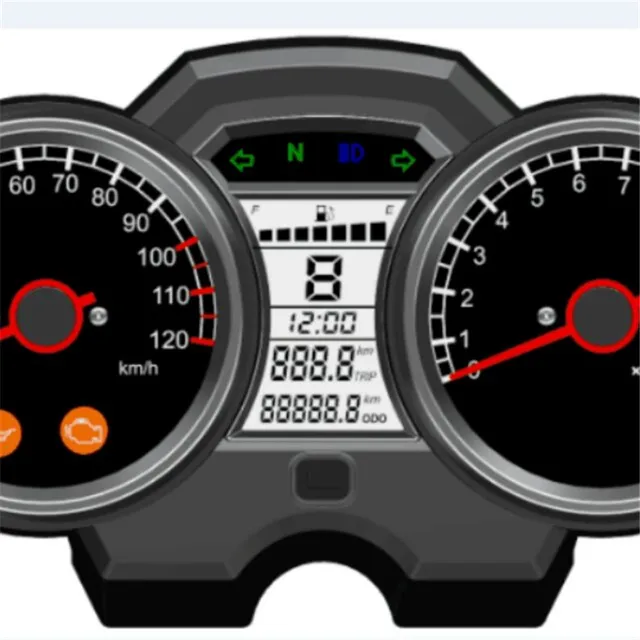 Below are some recommendations for preparing equipment for long-term parking.
Below are some recommendations for preparing equipment for long-term parking.
Washing and cleaning the ATV and motorcycle before long-term parking
Before storing the motorcycle, thoroughly wash and then dry and coat all important components and mechanisms with conservation grease (you can use regular silicone grease in an aerosol can).
It is better to cover equipment for winter, but not with polyethylene, but with a special protective cover made of breathable material. The cover will protect against dust and moisture, while not interfering with natural ventilation
Preparing the fuel system of an ATV and a motorcycle for a long parking
displaced moisture remaining on the inner walls. Over time, the fuel loses its properties, so it is recommended to replace the fuel with a new one at the beginning of the season before operation. If a plastic tank is installed on an ATV or motorcycle, then it is better to remove the fuel from it before parking.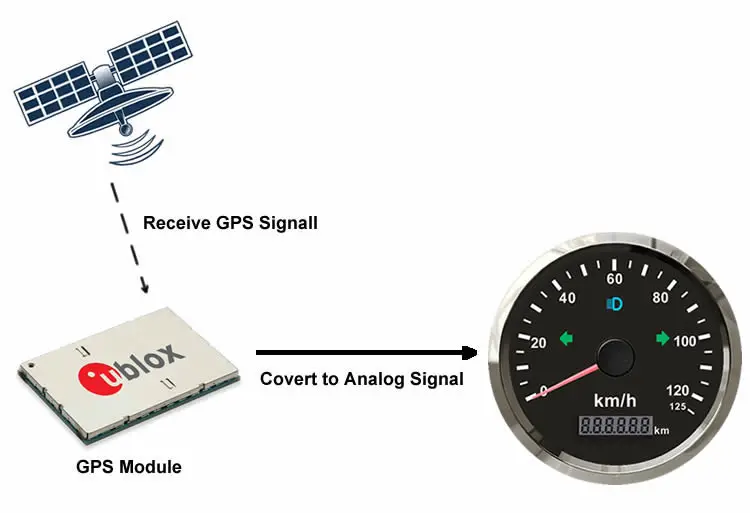
Before conservation, in order to ensure safety, it is necessary to check the fuel system for possible damage and leakage
Preparing the engine of an ATV and a motorcycle for a long stay
the crankcase and parts such as pistons, cylinders, and piston rings, due to the lack of a protective oil film on them, can also be subject to corrosion. Therefore, before a long-term parking, it is recommended to unscrew the spark plugs and fill in engine oil through the candle wells, while manually turning the engine crankshaft several revolutions. The holes in the candle wells should be closed with rags or special plugs to prevent foreign objects from getting inside the ATV engine while the vehicle is parked.
This operation will help create a reliable oil film on the parts of the cylinder-piston group during parking and protect them from possible corrosion.
Remove excess oil from ATV or motorcycle cylinders before use. To do this, it will be enough to turn the crankshaft with the help of an electric starter or a kickstarter for 3-5 seconds with the carburetor throttle fully open.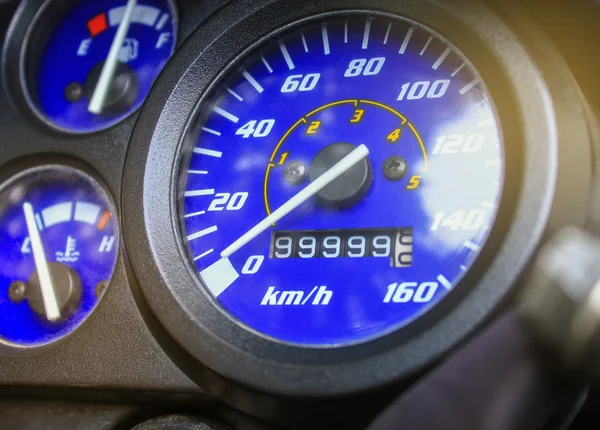
Motorcycle and ATV fluid replacement
Before "wintering" it is recommended to replace all technical fluids (engine oil, antifreeze, brake fluid), if, of course, they are used in your vehicle.
Old engine oil may contain contaminants that will cause it to thicken and cause unwanted deposits on parts walls and in oil passages.
At the beginning of the season, the fluids will have to be changed again, because. over time, they oxidize and lose their properties.
Motorcycle and ATV battery storage
The battery can be stored without removing it from the ATV, but be sure to disconnect it from the on-board network. Environmental parameters are important storage conditions for batteries. The optimum temperature for battery storage is from -10 to + 10 degrees Celsius. The humidity in the room should be as low as possible, this will slow down the self-discharge process. The battery must be fully charged before storage.